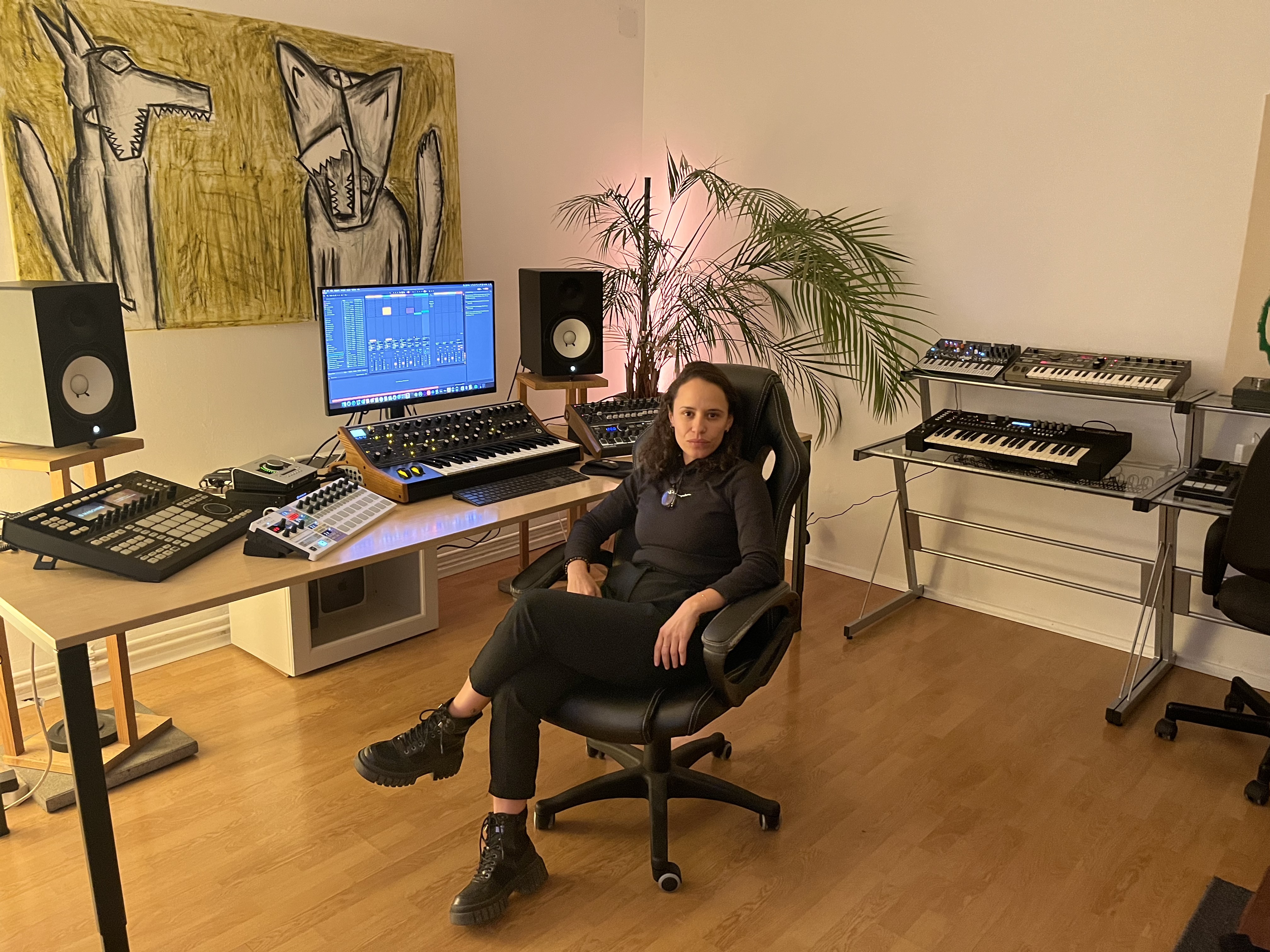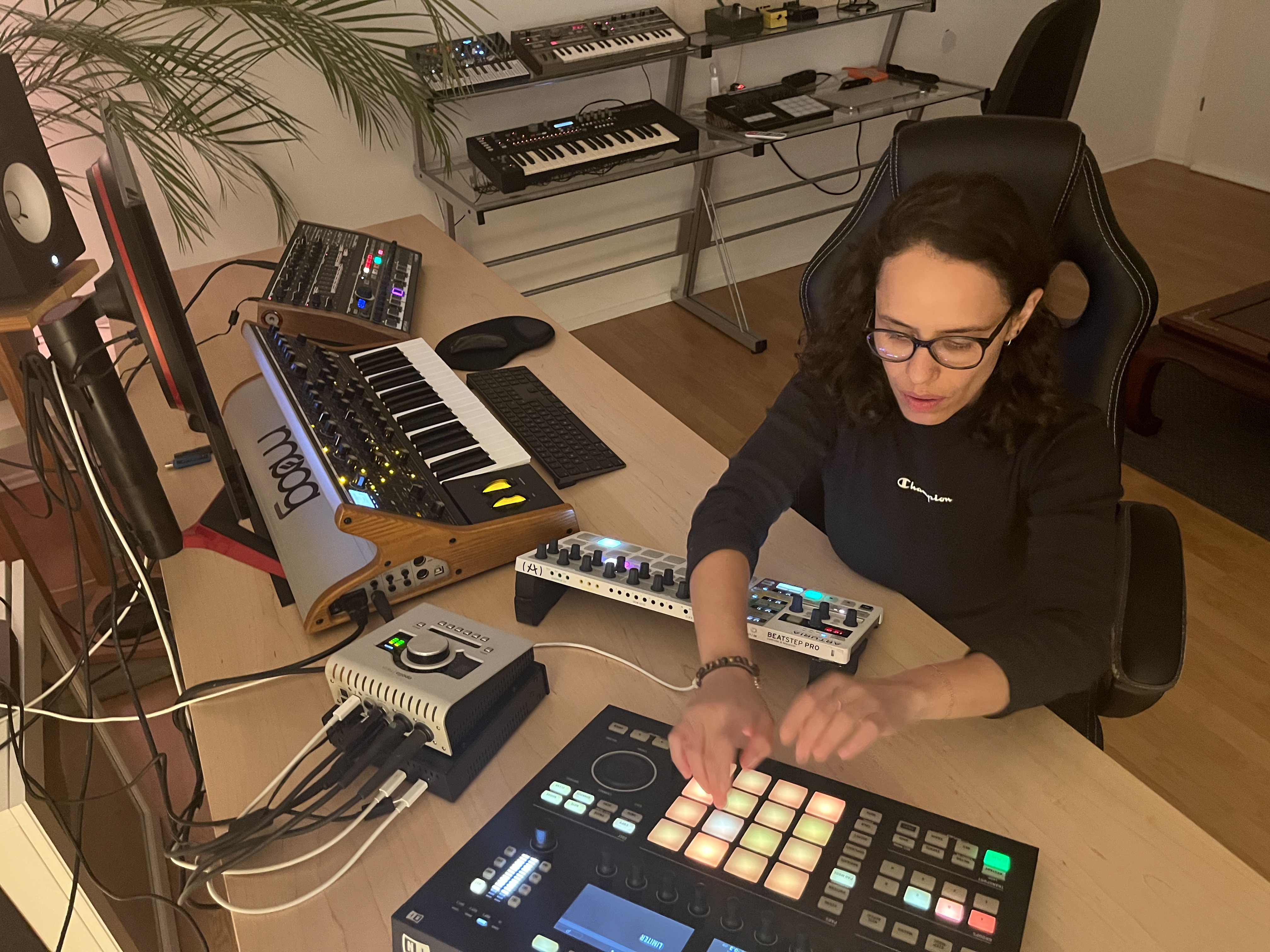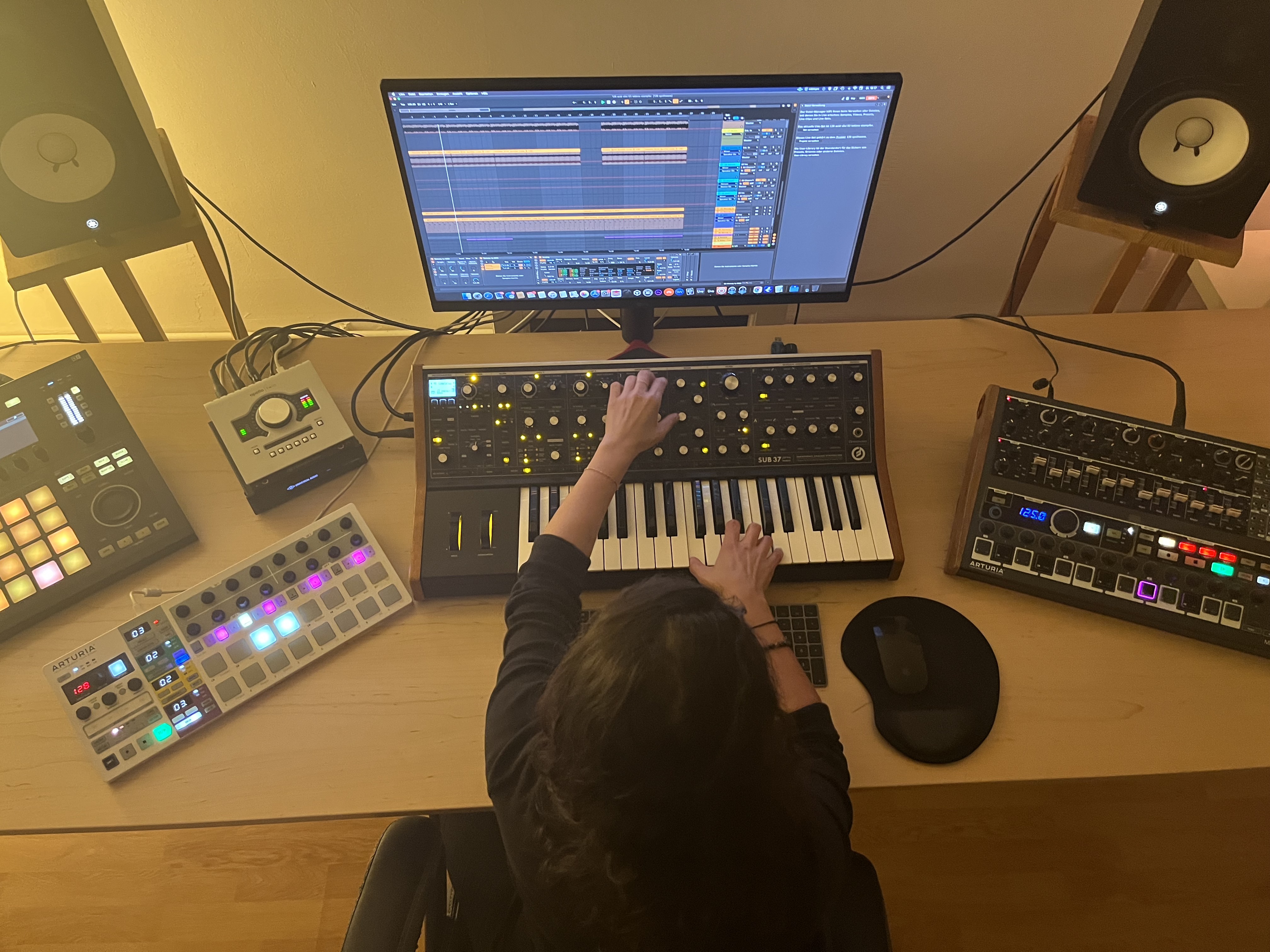Joyce Muniz: "I can't live without the Moog Sub 37 - it's the soul of all my productions"
The Brazilian producer's latest album is a sonic time capsule that captures formative years spent in Vienna, D’n’B-fuelled tours across India and a lockdown spent in Berlin. We find out more about how it was made

An album can be many things to the person who makes it: a diary, a mission statement, a love letter or just a bit of fun.
But for Brazilian producer Joyce Muniz, her latest project, Zeitkapsel, acted as a time capsule: a diverse collection of tracks that captures significant moments from her musical journey in sound, preserving them for future reflection.
Zeitkapsel is a colourful and eclectic affair that sees Muniz recruiting an array of talented collaborators to contribute vocals to her productions, which span sizzling electro-funk, wonky deep house, turbocharged trip-hop and ethereal breakbeat.
Testament to over a decade spent refining an inimitable sound, the album pinpoints milestones in Muniz’s unique trajectory as an artist, from formative years spent in Vienna and early days rapping in Portugese to D’n’B-fuelled tours across India and a lockdown spent hunkered down in Berlin, the city where she now resides.
We caught up with the producer ahead of the record’s release to find out more about how the album was made.
When did you start making music, and how did you first get started?
“I was DJing for a few years before I started to get into music production. First, I made bootlegs and was playing around the loops and samples using Ableton 6, and my first MIDI controller was the M-Audio UC-33E MIDI USB. Back then I wasn't thinking of my own productions, I just wanted to play around and experiment, and for that, Ableton was very easy and fun to use, especially for someone who doesn't have much experience.
Want all the hottest music and gear news, reviews, deals, features and more, direct to your inbox? Sign up here.
“It was easier than Logic, so I’ve been using Ableton ever since. One of the most inspiring elements for me was my friends, back then I used to hang with Shanti Roots, Stereotype and Sofa Surfer Boys. They were already releasing music and had established themselves as musicians, so I looked up to them in many ways. Back then my style was diverse, I was into breakbeats, house music, Miami bass, baile funk and drum and bass.”
Tell us about your studio/set-up.
“I have just left my studio which I shared with a very good friend of mine after about 12 years together. It was time to start something new, however the studio set-up I will try and keep the same where possible. I have a couple of analogues including the Moog Sub 37, Elektron Keys, Minibrute 2S, MicroFreak, Microkorg and BeatStep Pro as a beat sequencer. I have the Maschine MK3 for mostly percussion, drum or as workstations for live. I also use Komplete Kontrol S61 as a master keyboard.
“I have a UAD Interface with an external OCTO satellite which gives me the possibility to work with many plug-ins without overloading my CPU and provides low latencies to record my analogue synths. Some of my favourite plug-ins are the U-HE Repro, Arturia from Jupiter and of course the Roland Plugins.
“My monitors are the same, Yamaha HS80M. There are a few things that I can finally change in my new studio that I have always wanted to and the first is the monitoring. Now with more room in this space, I can finally get the Adam A77H. The first piece of gear for the new studio will be the Minifreak from Arturia, which I am really excited about. I can then invest in bass traps and absorbers which will be designed by a sound engineer friend of mine.”
What DAW (or DAWs) do you use, and why did you choose it?
“I have basically used Ableton since day one and have never stopped. It has a great development team behind it and therefore it always grows with my development and workflow.”
What one piece of gear in your studio could you not do without, and why?
“The Moog Sub 37 is my favourite item without a doubt, and I can’t live without it. It became the soul of all my productions, which is the trademark bassline. But I also use it for dreamy arp lines and even some quick acid sounds with the internal sequencer, which is easy to program.”

What’s the latest addition to your studio?
“I haven't bought any proper gear since the BeatStep from Arturia. But the next piece will be the Minifreak, the sounds are so fresh, it totally fits to my current taste which is electro, dark disco vibes.”
What dream bit of gear would you love to have in your studio?
“I don't know if it’s just a dream but one day I would love to build my own modular synth rack and combine things that no other developer has done. But to do that I will need time to build, to learn and to patch every sound and right now I don’t have the time for that. This could be something that I might do when I am retired from touring.”
When approaching a new track or project, where do you start?
“I mostly start with the drums followed by bass or synth leads. Very basic.”
What other artists do you look to for inspiration?
“Alex (Boys Noize) has inspired me a lot for many years. His productions are top-produced and it doesn't matter which style or genre he always manages to bring his unique touch. Even if it’s a pop-focused track he always makes it sound cool and different. And he is also a badass DJ.”

If you had to pick one song/album that’s been most influential on your work, what would it be?
“There is a lot of music and different genres that influence my work. But there is one track that I always listen back to. A track that was produced by an old friend Mario Neugebauer for Louie Austen & Peaches. The bassline is unique, I love how he mixes the jazz saxophone sound into the dark bass. It's super random but kind of cool. Also, the nasty vocals are dope. I always listen to this track to get inspired for my dancefloor tunes.”
What do you think makes you unique as a producer and musician?
“It's hard to answer that but one thing is that people never know what kind of vibe I will bring. I like experimenting with different moods like sometimes electro, afro, Indian or acid. Even dreamy vibes but always with a big bassline. I think this is exactly what people will hear in my upcoming album Zeitkapsel, a mix of different genres and styles with big basslines.”
What are you currently working on?
“After I finished the album, I worked on an EP with my friend Theus Mago. Since I am moving to a new studio and I don't have a proper workspace at the moment, I haven't been working on new music. Also, because I started to work on a live show with the German Film Orchestra Babelsberg. Basically, I will perform live with 80 instrumentalists on stage. This is a milestone project for me. I am super excited to do it and to hear my tracks in a classic version.”

Three music-making tips
1. Try using hardware sequencers to program drums
“I no longer write drums and sequences with the mouse, but by recording the BeatStep Pro. With a slight swing mode, roller function or randomization, everything becomes much more lively. In the past, the beats were sometimes very rigid. Since I've been recording my sequences and drums via the BeatStep, my ideas are much more groovy and it's also a lot of fun to jam. It gives me far more opportunities to create fancy rhythmic changes. I recommend not creating each beat with the mouse - instead, use an external beat sequencer.”
2. Optimize your studio's acoustics
“It’s very important to have good sound in your studio. Even if you can’t get it soundproofed, there are ways to make it better. I struggled for many years, especially with the bass frequencies, but I eventually optimised it with the use of Sonarworks Measurement microphone. After I calibrated my speakers and studio headphones, the mixing results were much improved, using my studio headphones. This is a good option if you don't have many possibilities to change the actual room itself.”
3. Record your synths dry
“When recording synthesizers, it is very important that you record dry (without effects) and effect FX tracks separately. You then have many more options for post-processing the individual tracks. In the process of jamming, you often overdo it with effects and then you may not be able to integrate this into the mix, so it's better to record separately, and then you can balance better.”




I'm MusicRadar's Tech Editor, working across everything from product news and gear-focused features to artist interviews and tech tutorials. I love electronic music and I'm perpetually fascinated by the tools we use to make it.